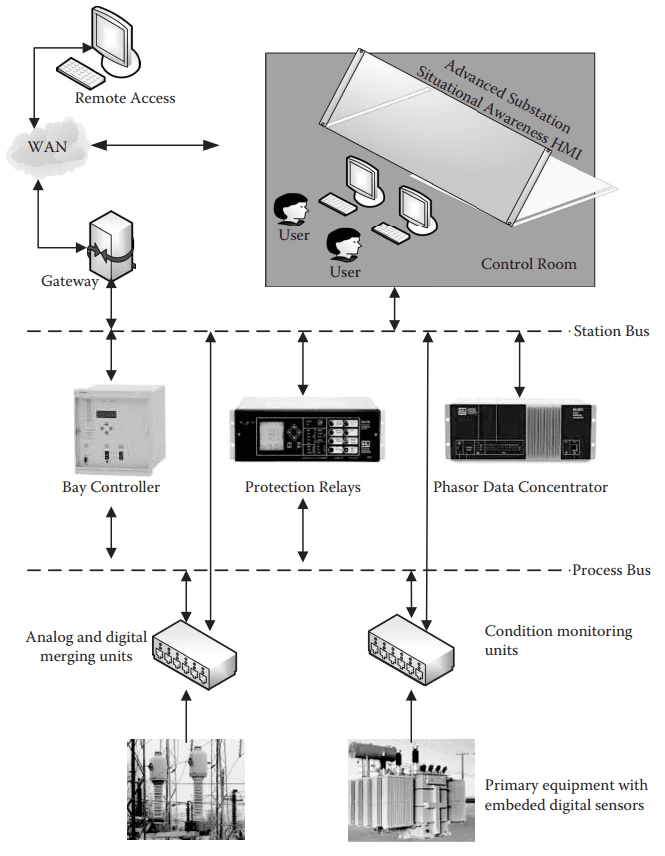The following figure gives the picture of the modern digital substation with the equipment in the field (process level based on IEC 61850-9-2), the bay-level devices and communication, and the station-level LAN and the associated devices and databases.

The substation is organised in three architectural levels: Process level, Protection and control level, and Station bus and station level.
Process level
Conventionally the data from the equipment in a substation reach the devices for processing via hardwire. In the modern substation, the equipment (primary systems) in the substation is embedded with smart sensors, which can directly communicate over a LAN, which is referred to a process bus. The current, voltage, and other data (pressure and temperature from GIS, etc.) from the field are transmitted over the Ethernet process bus. The devices, such as protection relays, recorders, PMUs, bay controllers, and PDCs, can readily subscribe to this information as clients to this data flow over the process bus. The information from the field devices (primary equipment) travels to the SCADA control center via the process bus, and the control signals from the control station reach the field devices through the process bus. In a fully digital architecture, control commands are also routed to the primary devices via the process bus. The process bus enables time-critical services for both protection and control. Thus, the process bus aids in effectively communicating the information from the “eyes and ears” of the power system to the bay level more effectively and efficiently than the conventional means.
Protection and control level
There are devices in a substation which link the process bus with the station bus. These include the secondary equipment like bay controllers, protection relays, Ethernet network and switches, time synchronization units, measuring devices, and recording devices. The bay level or the protection and control level include these devices and the panels that host them.
Station bus and station level
The station bus is the LAN that supports peer-to-peer communication and multiple devices and clients to exchange data. The communication of data to higher hierarchy also originates from this layer. The IEDs perform the time-critical protection functions by directly interacting on the process bus. The point-on-wave switching is also done by the IEDs. The station will host the substation human-machine interface (HMI) required to visualize the events in the substation so that the personnel will get the real-time data of the operations. Coordination of multiple IEDs and also the condition monitoring of the equipment in the substation (transformers, circuit breakers, and bushings, etc.) are managed by the station-level HMI via the station bus.
According to Power System SCADA and Smart Grids by Mini S. Thomas, John D. McDonald.

